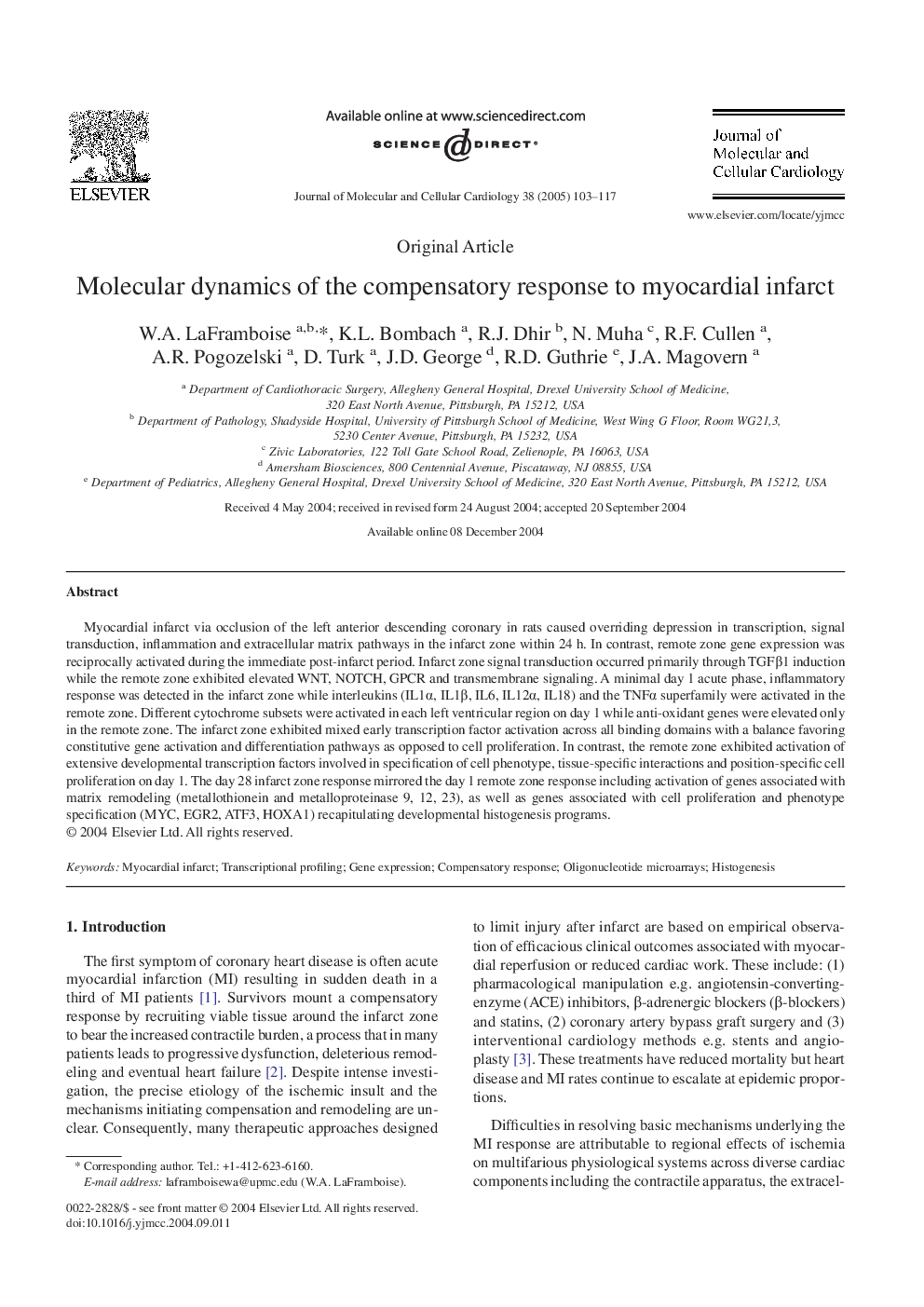| Article ID | Journal | Published Year | Pages | File Type |
|---|---|---|---|---|
| 10954737 | Journal of Molecular and Cellular Cardiology | 2005 | 15 Pages |
Abstract
Myocardial infarct via occlusion of the left anterior descending coronary in rats caused overriding depression in transcription, signal transduction, inflammation and extracellular matrix pathways in the infarct zone within 24 h. In contrast, remote zone gene expression was reciprocally activated during the immediate post-infarct period. Infarct zone signal transduction occurred primarily through TGFβ1 induction while the remote zone exhibited elevated WNT, NOTCH, GPCR and transmembrane signaling. A minimal day 1 acute phase, inflammatory response was detected in the infarct zone while interleukins (IL1α, IL1β, IL6, IL12α, IL18) and the TNFα superfamily were activated in the remote zone. Different cytochrome subsets were activated in each left ventricular region on day 1 while anti-oxidant genes were elevated only in the remote zone. The infarct zone exhibited mixed early transcription factor activation across all binding domains with a balance favoring constitutive gene activation and differentiation pathways as opposed to cell proliferation. In contrast, the remote zone exhibited activation of extensive developmental transcription factors involved in specification of cell phenotype, tissue-specific interactions and position-specific cell proliferation on day 1. The day 28 infarct zone response mirrored the day 1 remote zone response including activation of genes associated with matrix remodeling (metallothionein and metalloproteinase 9, 12, 23), as well as genes associated with cell proliferation and phenotype specification (MYC, EGR2, ATF3, HOXA1) recapitulating developmental histogenesis programs.
Keywords
Related Topics
Life Sciences
Biochemistry, Genetics and Molecular Biology
Cell Biology
Authors
W.A. LaFramboise, K.L. Bombach, R.J. Dhir, N. Muha, R.F. Cullen, A.R. Pogozelski, D. Turk, J.D. George, R.D. Guthrie, J.A. Magovern,
